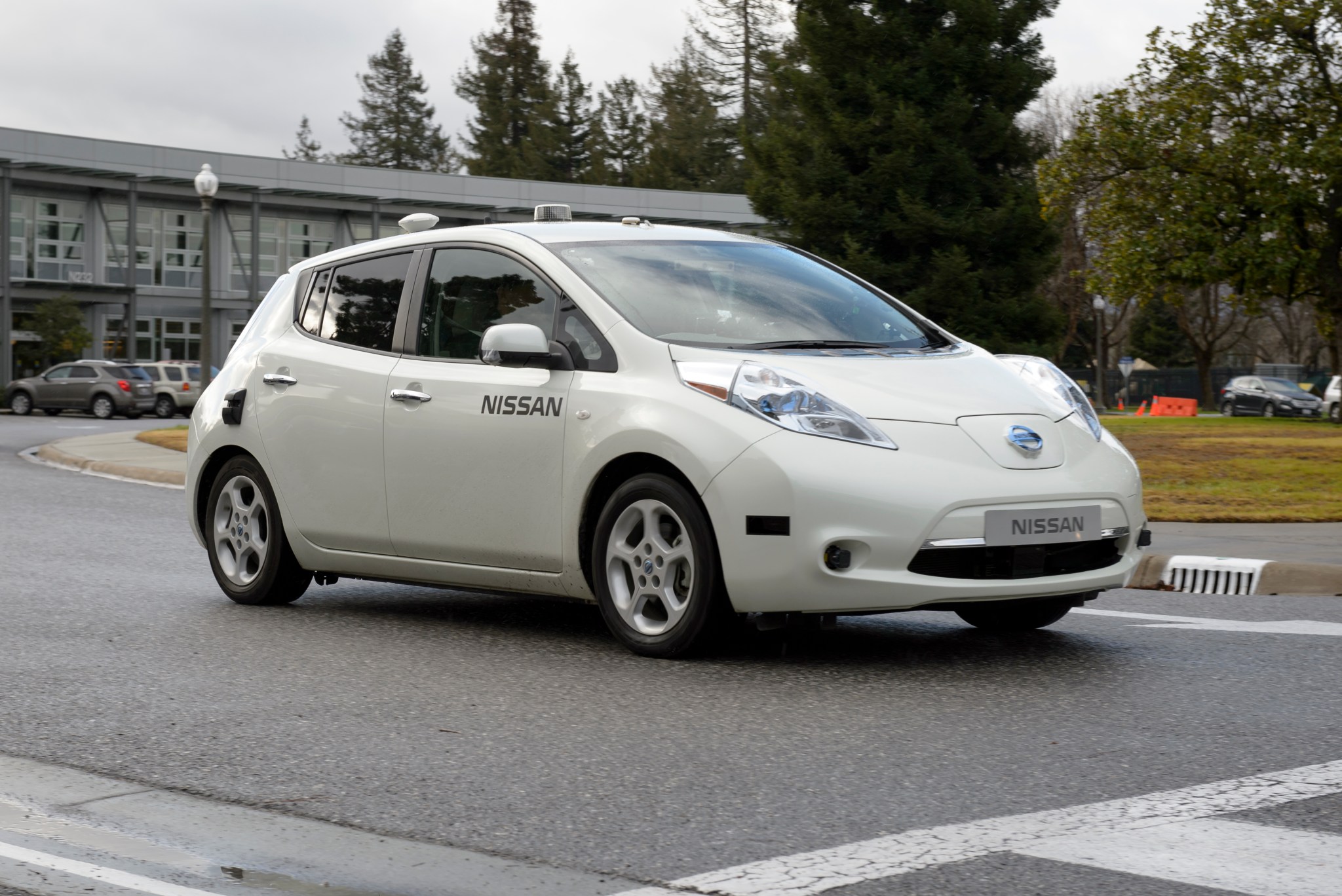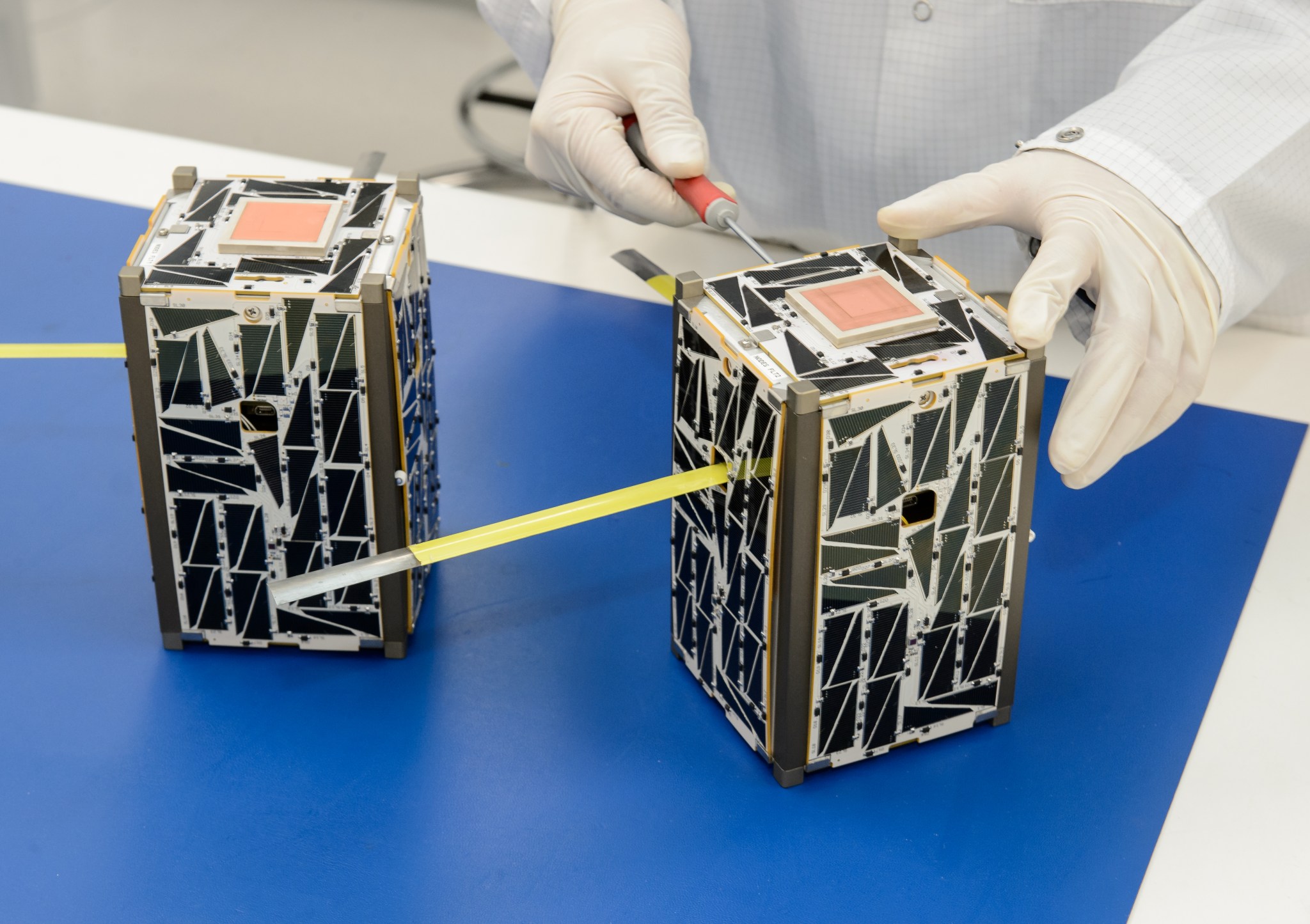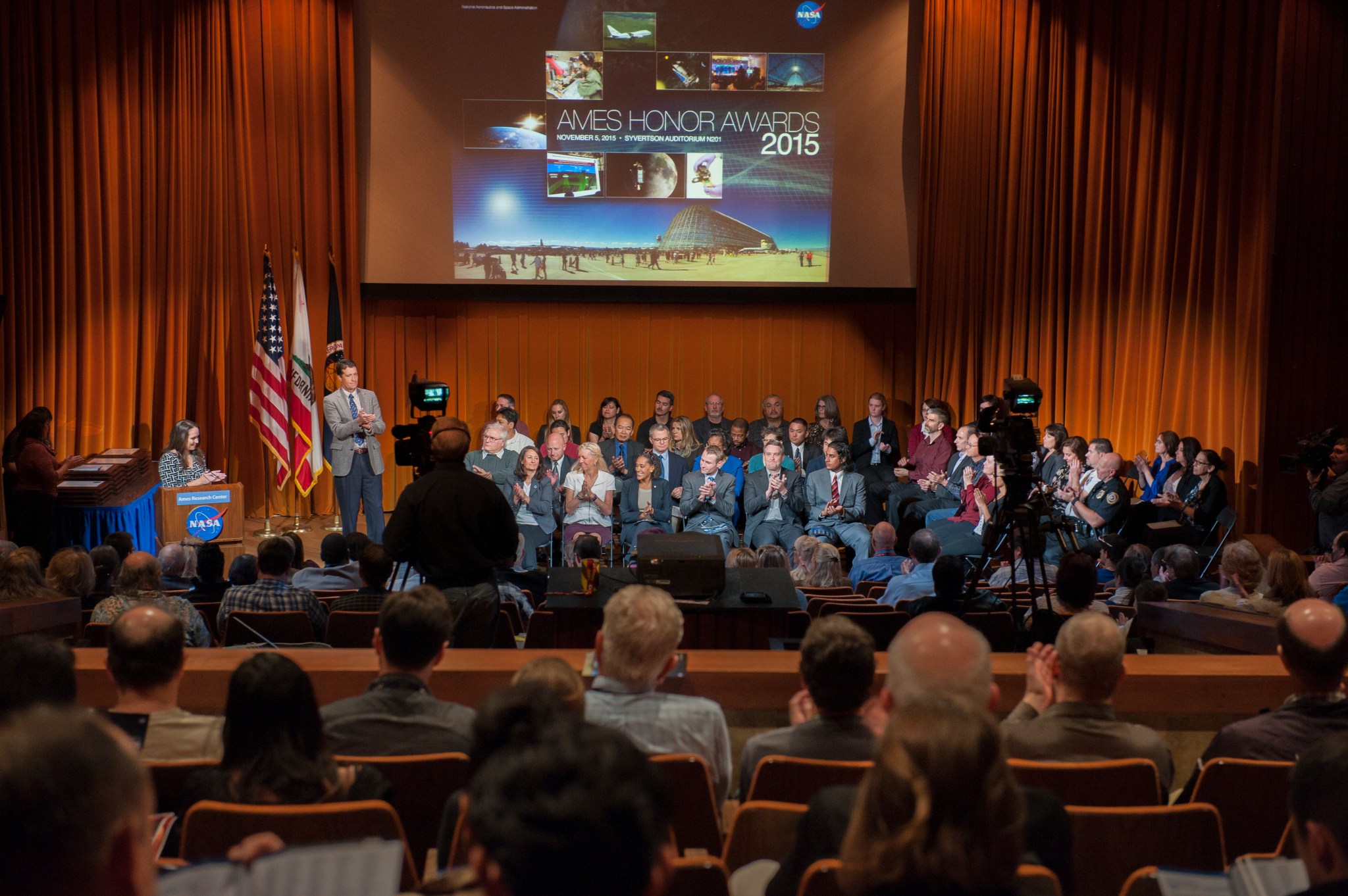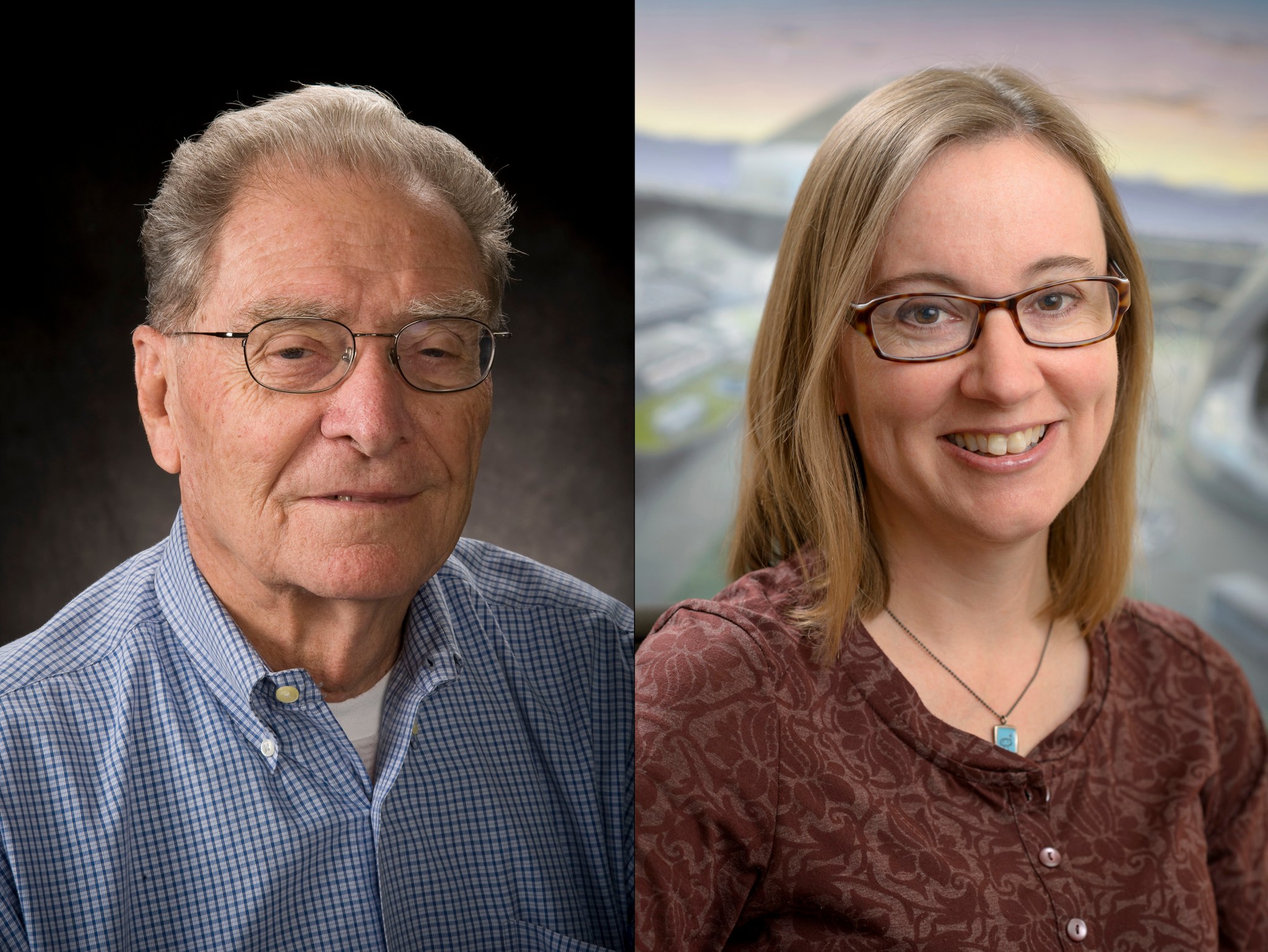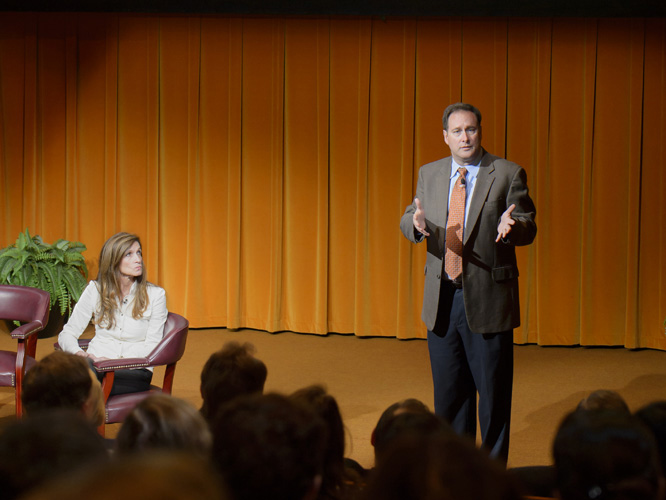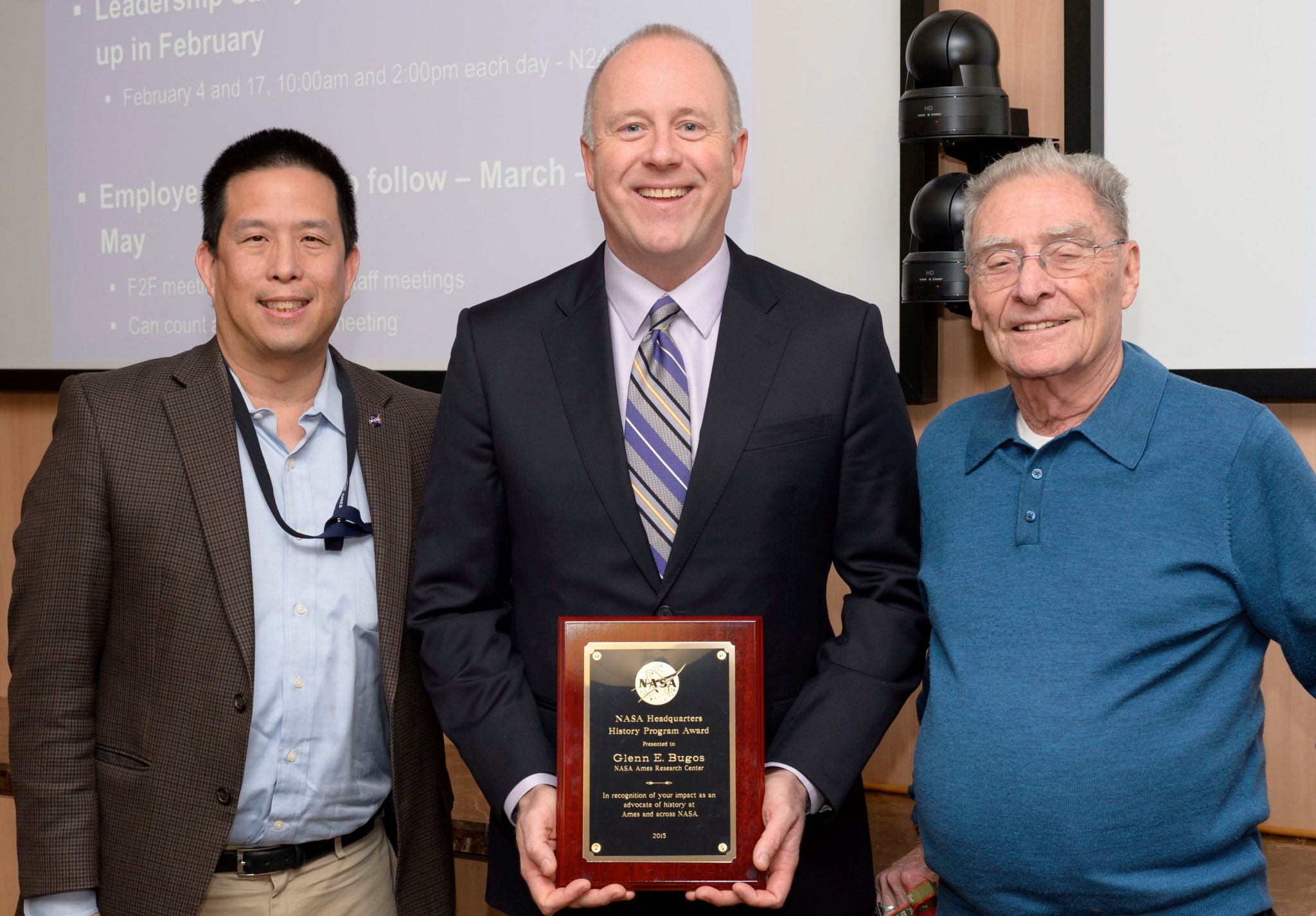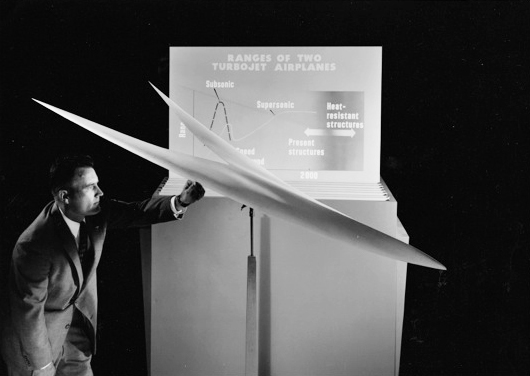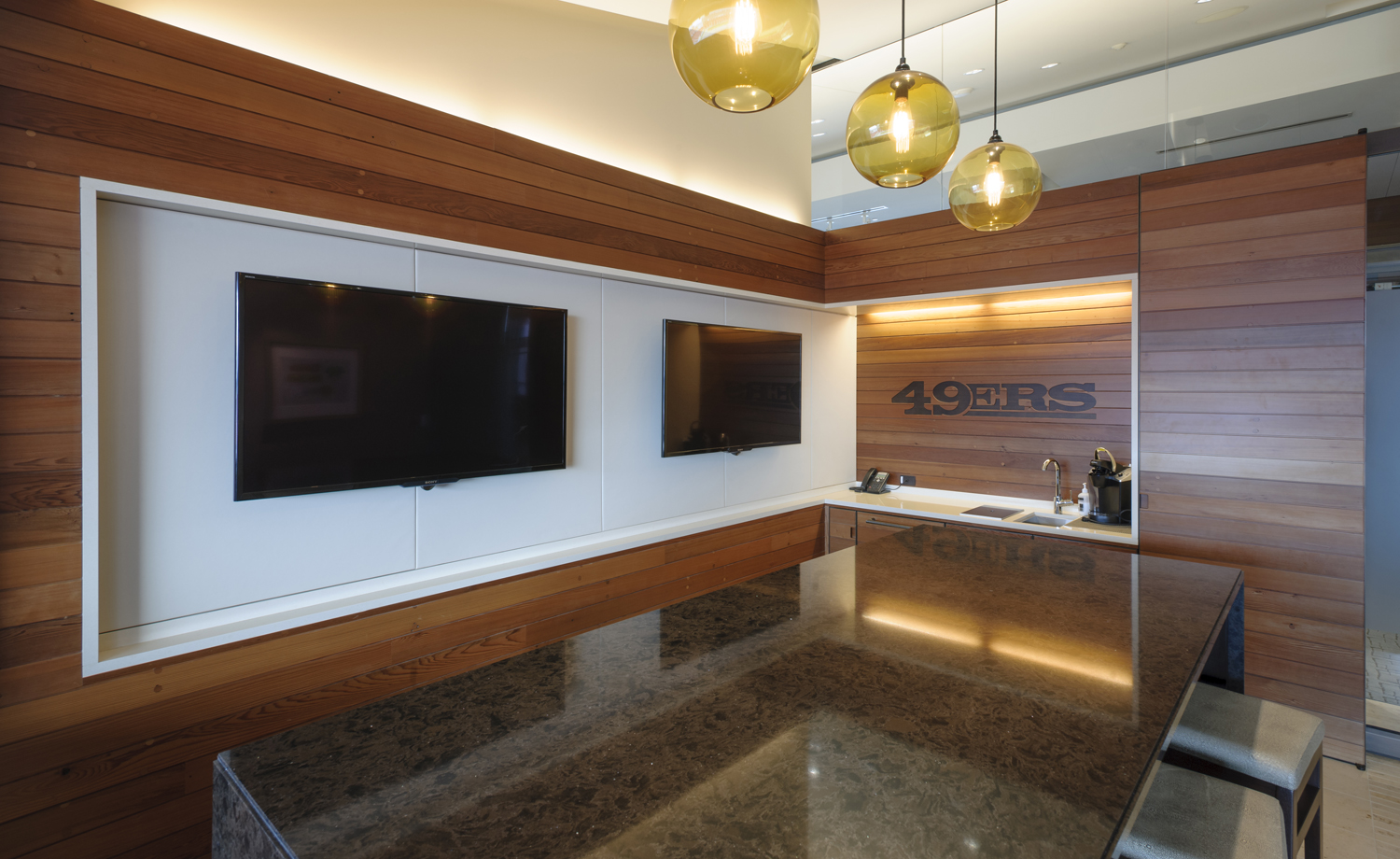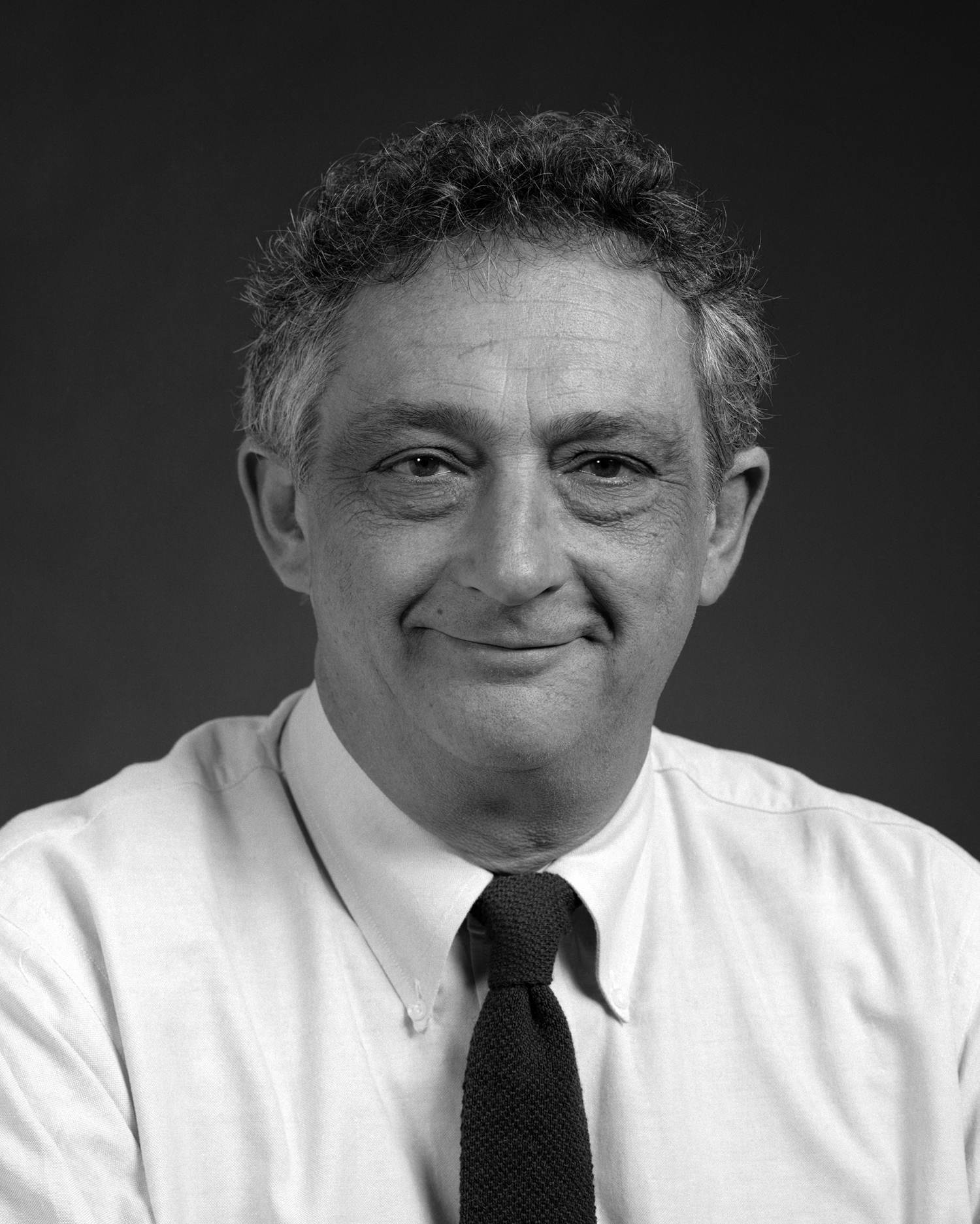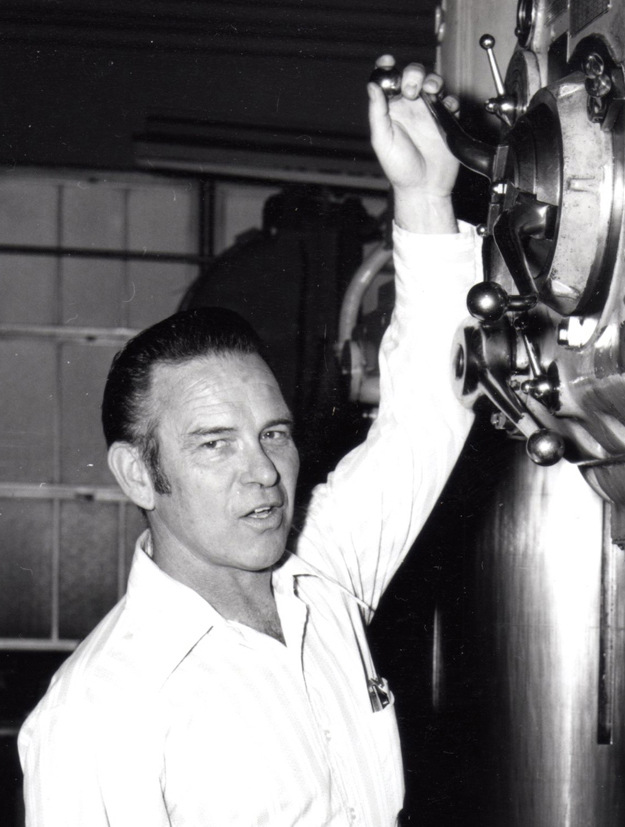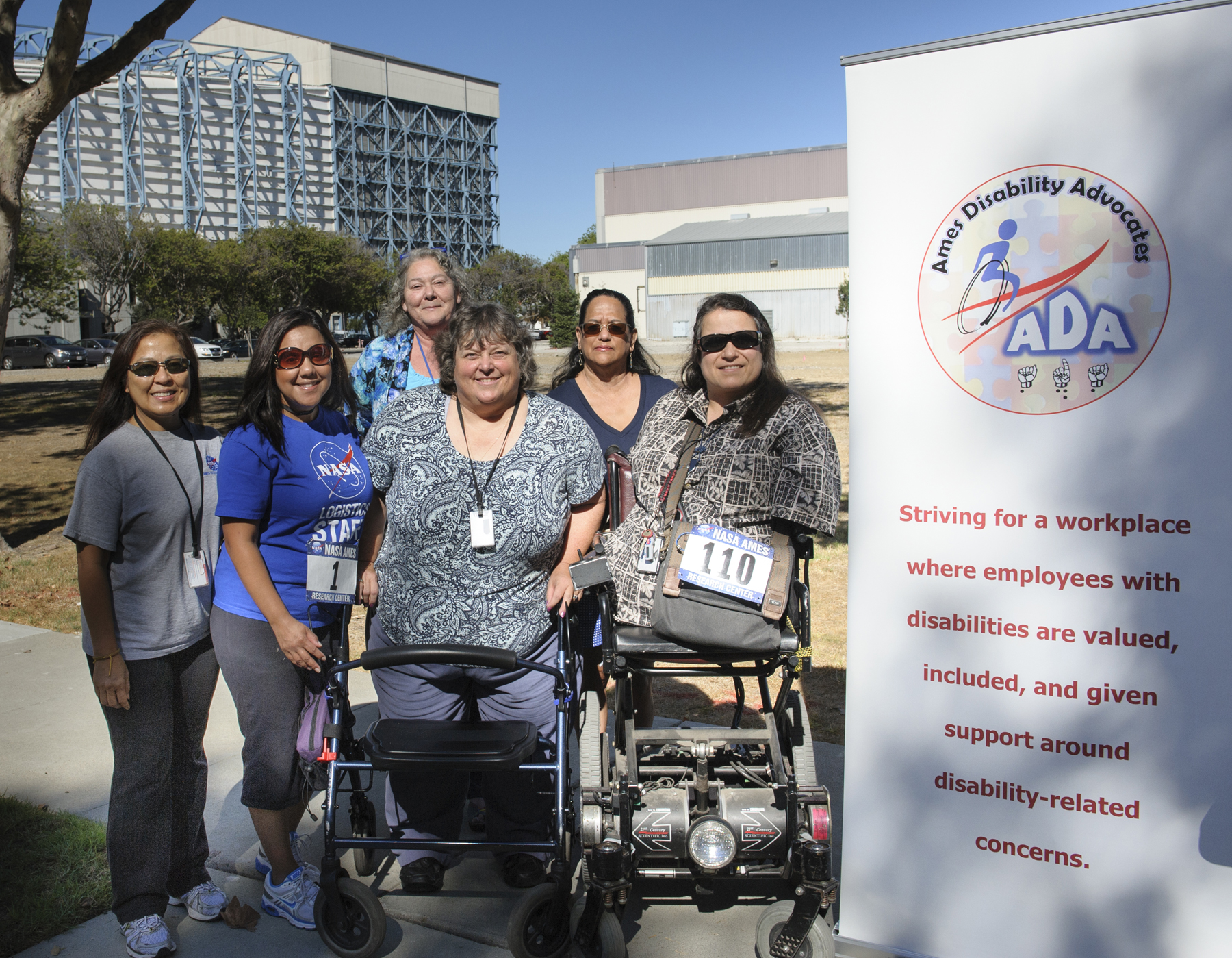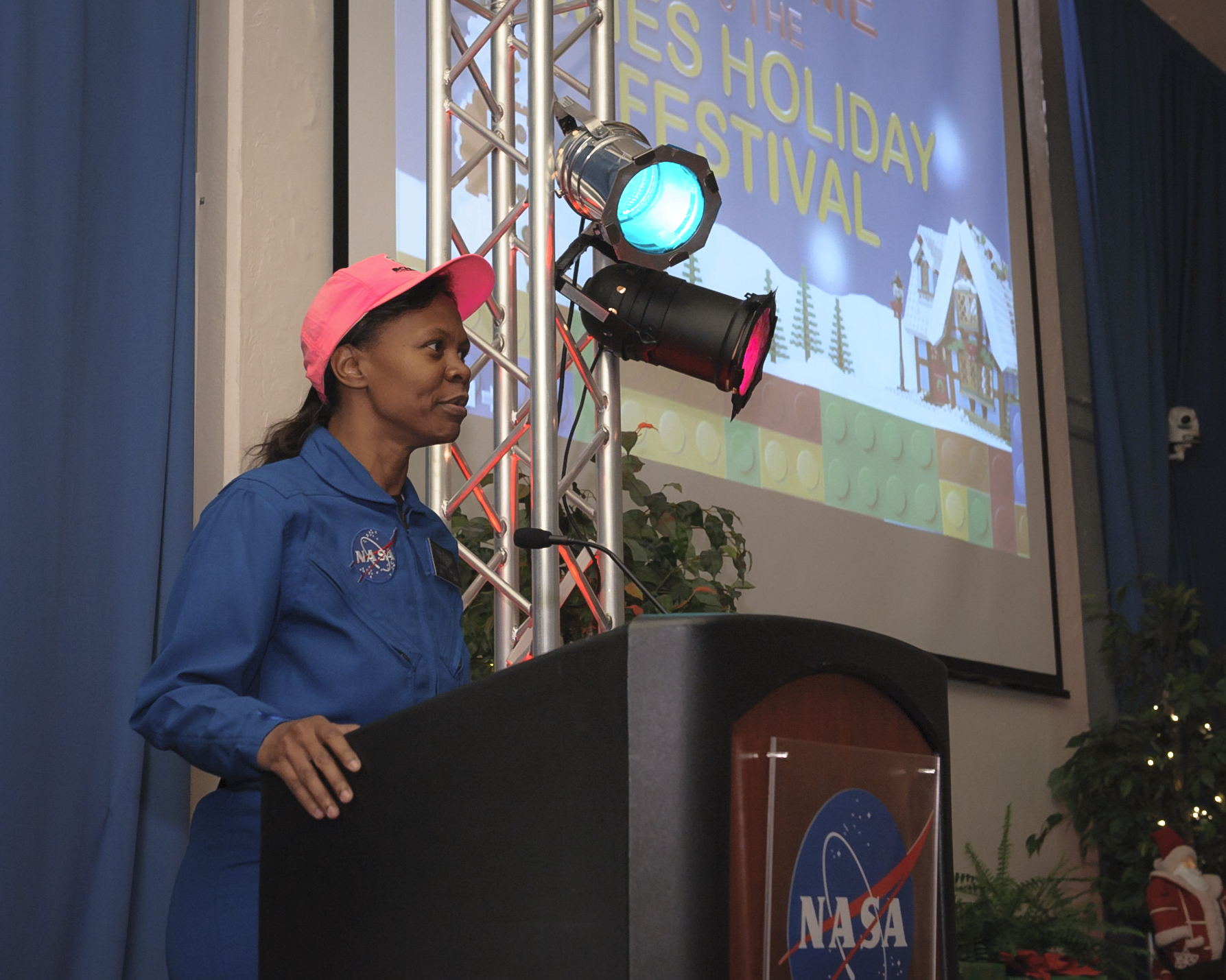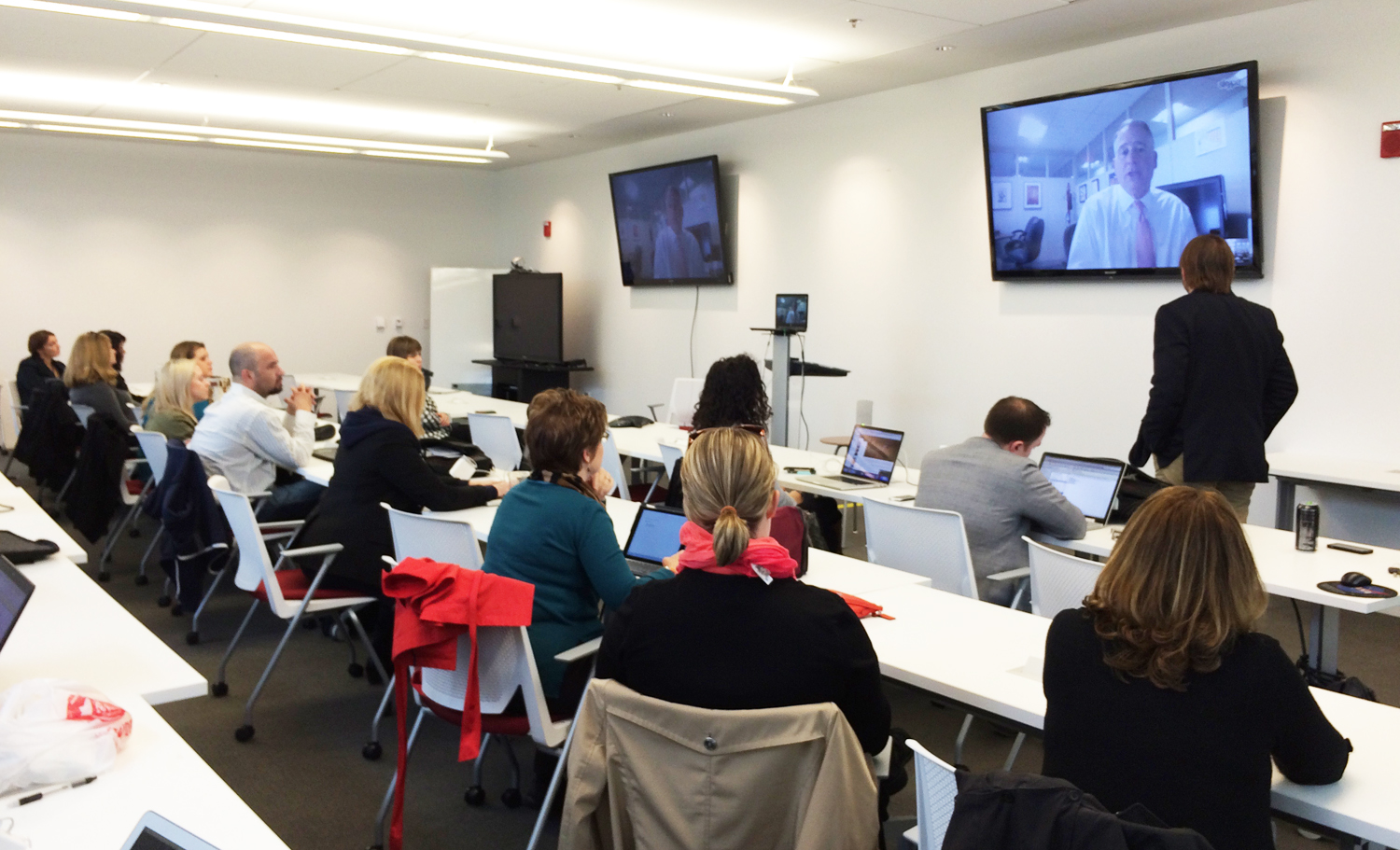NASA Ames Astrogram – January 2016 (24MB PDF)
Nissan test drives NASA space technology in driverless cars
For the past year, NASA Ames and automaker Nissan have been collaborating on the development of autonomous driving technologies that could one day be used in future consumer vehicles, robotic rovers on Mars and other space exploration missions.
On Jan. 6, 2016, a group of senior executives from the Renault-Nissan Alliance, including Carlos Ghosn, chairman and CEO of Nissan, and Jose Munoz, chairman of Nissan North America, visited Ames for meetings and a showcase of the technical partnership between NASA and Nissan North America.
The partnership allows researchers to develop and test autonomy algorithms, concepts and integrated prototypes for a variety of vehicular transport applications – from rovers to self-driving cars. After briefings, the group observed testing of Nissan’s all-electric LEAF as it performed safe autonomous drives across the center. Drive demonstrations were conducted with the Nissan representatives as well as Ames’ Director Eugene Tu and Associate Director Steven Zornetzer. The LEAF vehicle is equipped with cameras, sensors and cellular data networking, and uses robotics software originally developed for Ames’ K-10 and K-REX planetary rovers to operate autonomously.
“This is not only a demonstration of the transfer of space technology to industry, but also the application of their research back to our space technology, with additional uses for our unmanned aircraft systems research here at Ames,” said Tu. “This is a perfect example of technology literally driving exploration and enabling future space missions.”
Super Guppy carrying Orion EM-1 heat shield lands at Ames
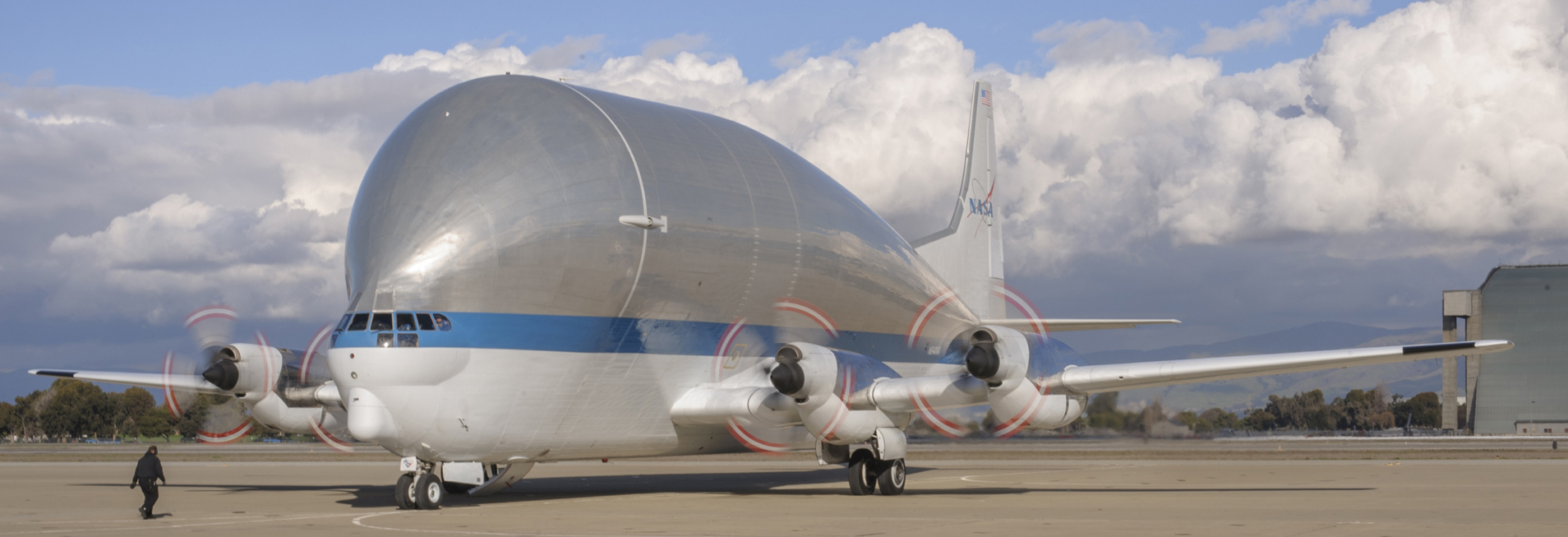
NASA small satellites to demonstrate swarm communications
NASA’s two Nodes small satellites hitched a ride to the International Space Station on the fourth Orbital ATK cargo mission, which launched Dec. 6, 2015. Once aboard the station, the satellites will settle in for a two-to-three month stay until deployed into low-Earth orbit in early 2016.
Built at NASA Ames, Nodes is a technology demonstration mission that will launch from the space station and will demonstrate new capabilities that are critical to future missions where multiple spacecraft are in use at the same time. Each of the two Nodes CubeSats are identical measuring 4 inches by 4 inches by 7 inches tall and weigh about four pounds. The Nodes mission duration is expected to be about two weeks, although they will continue to orbit for about six months.
A first for small satellites, Nodes will demonstrate the ability to receive and distribute commands in space from the ground in addition to periodically exchanging scientific data from their onboard radiation instruments. The satellites will be able to configure their data network autonomously by determining which spacecraft is best suited to communicate with the ground each day of the mission. Nodes continues the legacy of the PhoneSat series of small satellites that first introduced and successfully implemented the use of Android smartphone technology instead of systems that were custom developed and built.
The launch of the Nodes small satellites follows last month’s launch of the eight small satellites of the Edison Demonstration of Smallsat Networks (EDSN) mission, which was lost in the failure of the U.S. Air Force-led Operationally Responsive Space Office’s ORS-4 mission. However, the Nodes spacecraft were developed at Ames by the same team that developed the EDSN spacecraft and many of the same capabilities planned for EDSN will be demonstrated in the Nodes mission, with additional software enhancements.
The Nodes project is sponsored by the Small Spacecraft Technology Program (SSTP), a program within NASA’s Space Technology Mission Directorate, and received additional funding from NASA Ames.
AAS presents Borucki with Carl Sagan Award
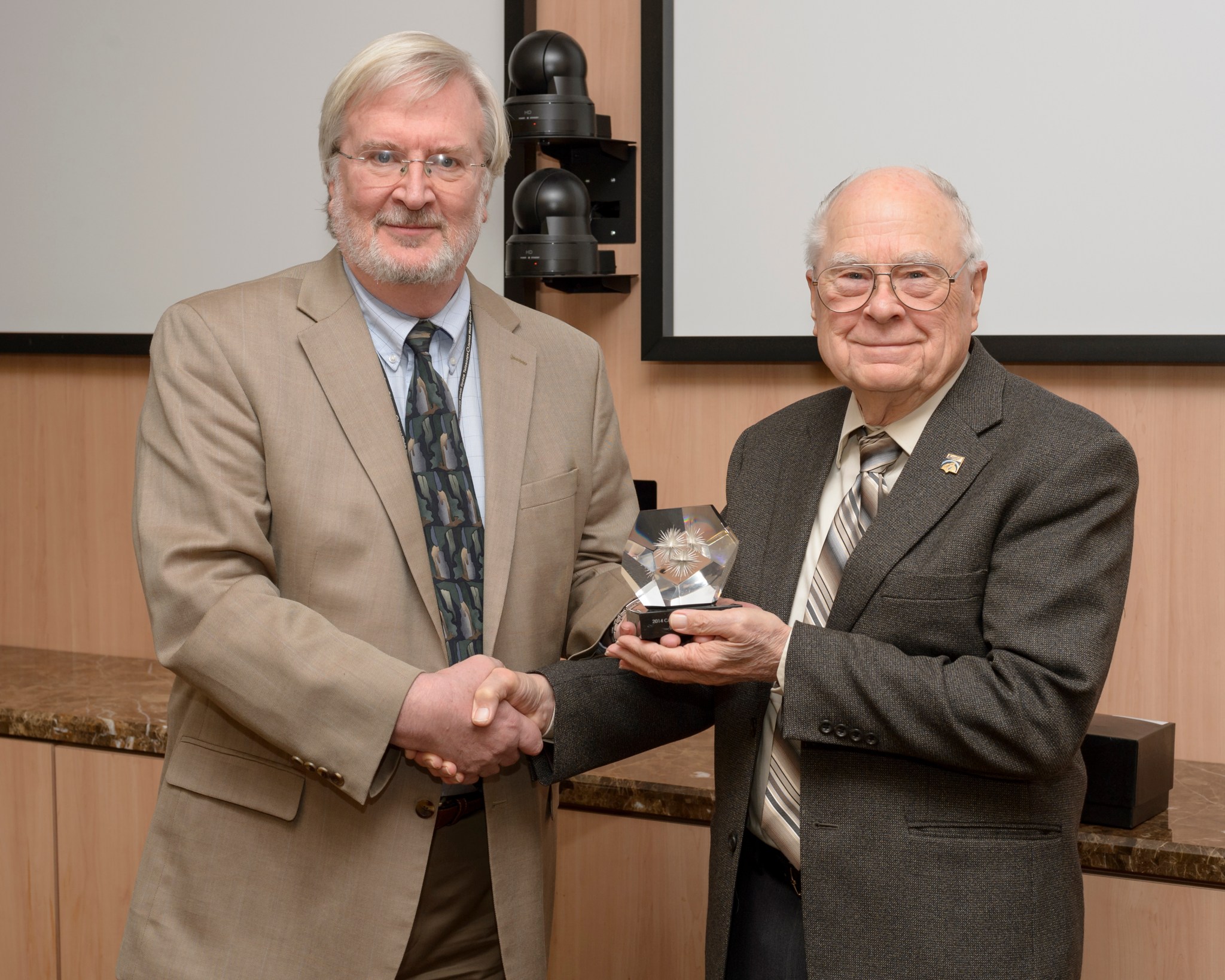
NASA holds first-ever quantum computing media event and tour of its Quantum Artificial Intelligence Laboratory facility
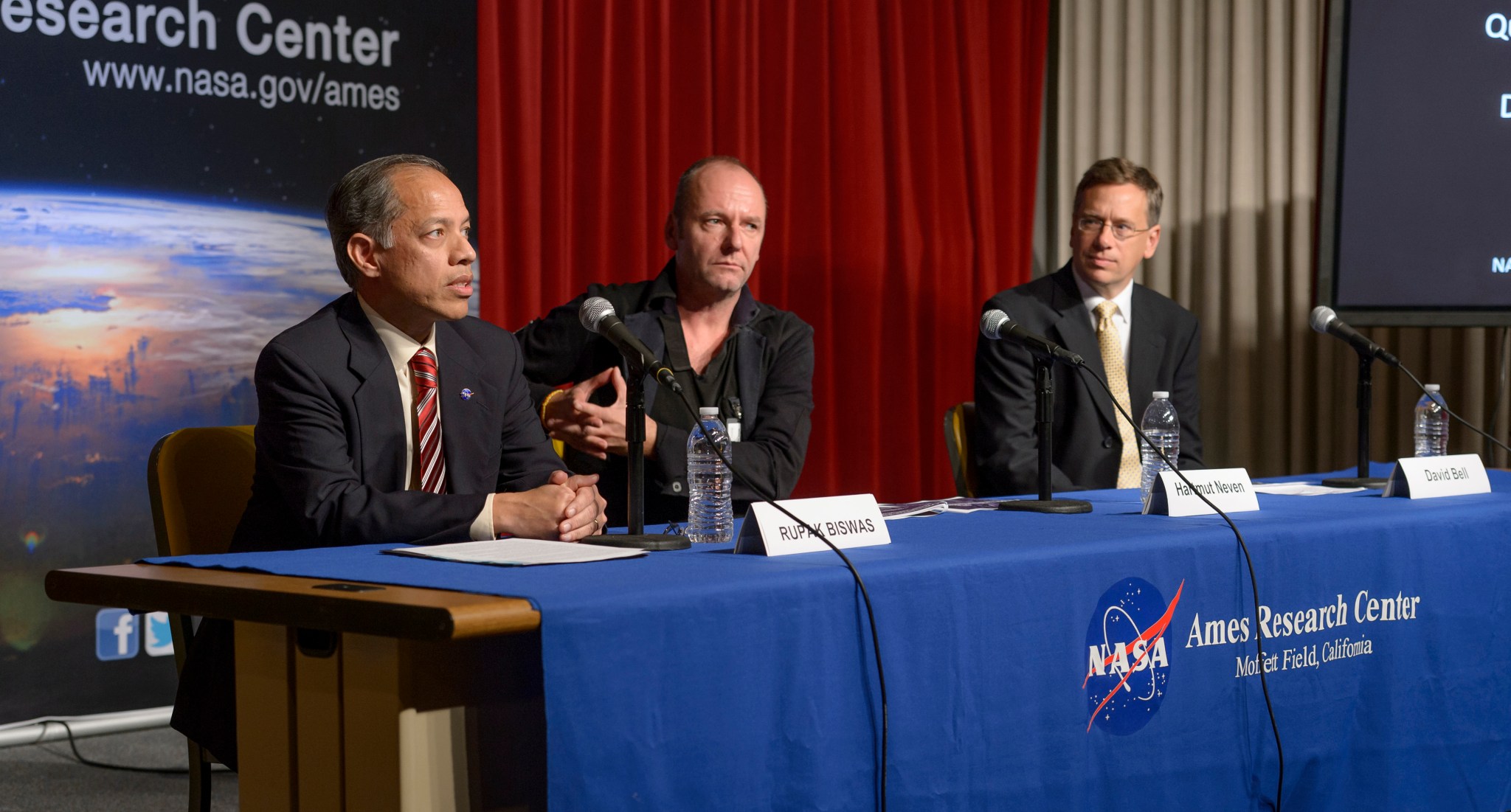
On Dec. 8, 2015, for the first time, the NASA Advanced Supercomputing (NAS) facility opened its doors to members of the news media and allowed tours of its Quantum Artificial Intelligence Laboratory (QuAIL) at NASA Ames.
Approximately 40 members of the media, including representatives from the Wall Street Journal, NBC, CBS, Popular Mechanics, Reuters, Fox News, Scientific American, Fortune and the San Francisco Chronicle attended the event. Journalists heard from a panel of computer scientists involved in the emerging quantum computing effort as they shared their vision for quantum computing, what real-world applications are being studied, and where quantum computing may take us in the future.
QuAIL supports a collaborative effort among NASA, Google and the Universities Space Research Association (USRA) to explore the potential for quantum computers to tackle optimization problems that are difficult or impossible for traditional supercomputers to handle. The panelists included Rupak Biswas, director of Exploration Technology at Ames; Hartmut Neven, director of Engineering at Google, Inc.; and David Bell, director of the Research Institute for Advanced Computer Science for the USRA.
Following the panel briefing, media toured the NAS facility that houses the 1,097-qubit D-Wave 2X™ quantum computer. Unlike traditional computers, in which bits must have a value of either zero or one, a qubit can represent zero, one or both values simultaneously. Representing information in qubits allows the information to be processed in ways that have no equivalent in classical computing. The team extensively retrofitted the facility to provide isolation from noise and vibration, as well as the infrastructure required to cool the system to its near-absolute-zero operating temperature.
Researchers on NASA’s QuAIL team are using the system to investigate areas where quantum algorithms might someday dramatically improve the agency’s ability to solve difficult optimization problems in aeronautics, Earth and space sciences, and space exploration.
For more information about the NASA QuAIL project, visit: www.nas.nasa.gov/quantum
Employees recognized at 2015 Ames Honor Awards ceremony
The 2015 Ames Honor were presented at a ceremony Nov. 5, 2015 in the Syvertson Auditorium. Congratulations to the following deserving employees:
2015 Ames Honor Awardees:
Administrative Assistant Support/Secretary
Susan P. Long
Administrative Professional
Veronica L. Gutierrez
Robin M. Orans
Carolina Rudisel
Commercialization/Technology Transfer Award
Jing Li
Contractor Employee
Dennis W. Acosta, Jacobs Technology Inc.
Wayne Bridges, SAIC
Christopher J. Burke, Search for Extra-Terrestrial Intelligence (SETI)
Sarah H. Hayes, Millennium Engineering & Integration Co.
Matthew J. Holtrust, Deltha-Critique
Chok Fung Lai, UARC
Leonard H. Lee, WYLE LABS
Robert L. Morris, Search for Extra-Terrestrial Intelligence (SETI)
Garret K. Nakashiki, Millennium Engineering & Integration Co.
Barry J. Porter, Aerospace Computing, Inc.
Khadeejah A. Zamudio, WYLE LABS
Diversity and Opportunity
Mary M. Connors
Education and Outreach
Wendy L. Holforty
Engineer
Katsutoshi C. Ishisoko
Group/Team
Ames 75th Anniversary Open House Event
Ames Employee and Visitor Processing Offices
EXES Instrument Team
Fruit Fly Lab Team
ISS Payloads Flight Processing Team
ISS Bioculture Anomaly Resolution Team
Kepler/K2 Flight Planning Center
LADEE Ultraviolet and Visible Spectrometer Instrument/Science Team
NASA Ames Video Team
UAS-NAS Project IT&E Team
WetLab-2 RNA Extraction Team
Mentor
Yvonne A. Clearwater
Raymond T. Gilstrap
Marianne Shelley
Project Management
Jill J. Bauman
Fay C. Chinn
Scientist or Researcher
Ruth K. Globus
Special Appreciation
Barbara A. Cohen, Marshall Space Flight Center
Student
Lisa J. Hildebrand
Jason D. Renwick
Supervisor/Manager
Yvonne Pendleton
Sylvia A. Stanley
Jill Willard
Technical Support/Professional
Cristine J. Andes
Michelle M. Eshow
Roxana L. Rodriguez
Ames celebrates civil rights leader Martin Luther King Jr.’s birthday
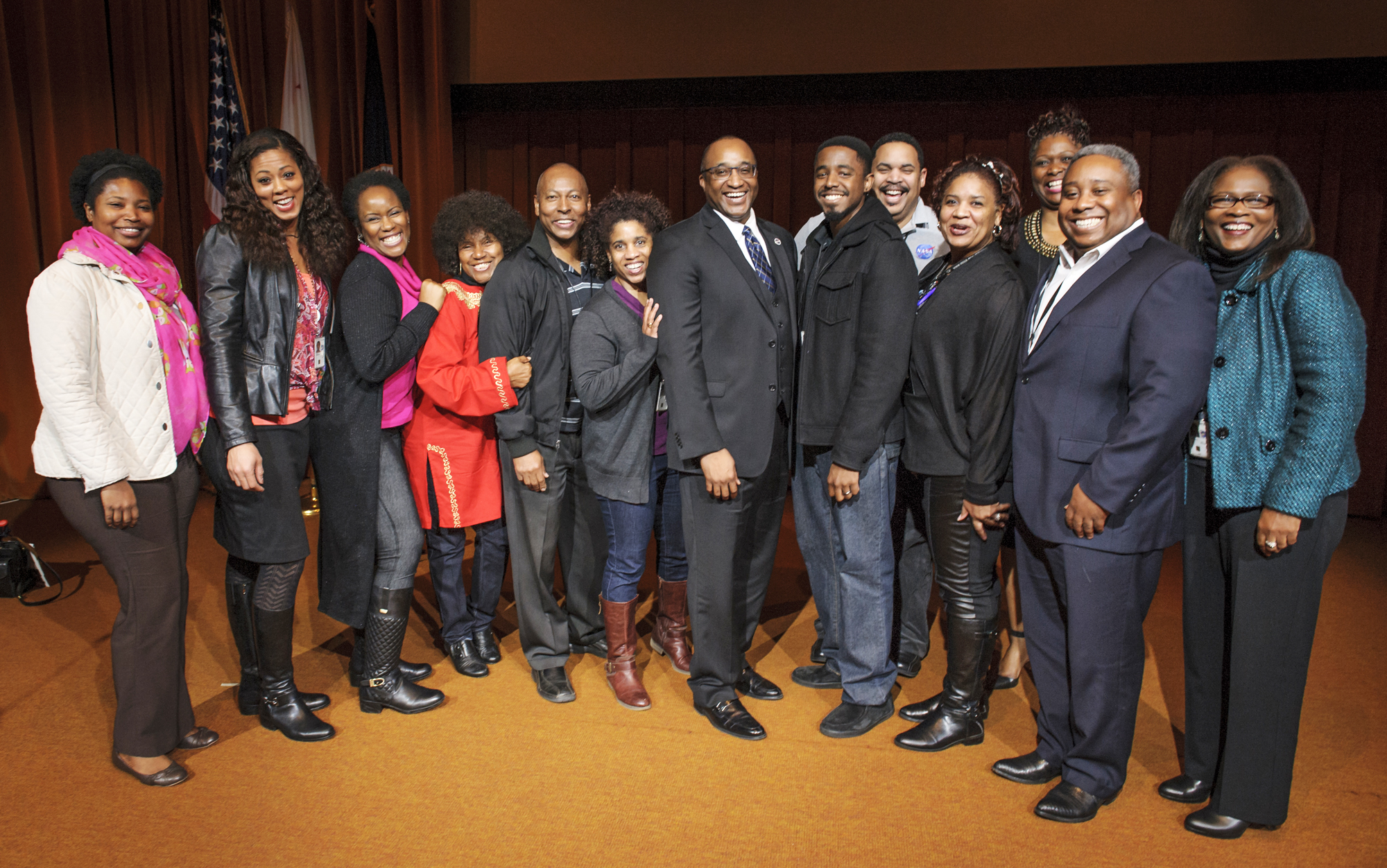
Ombuds Offices services available to Ames employees
The Ames Ombuds Office provides all civil servants, contractors and students at the center with a supplemental, confidential and informal channel of communication to raise significant issues and concerns that they perceive could impact safety, organizational performance or mission success.
The Ombuds is accountable for conducting informal inquiries, raising issues of concern to appropriate officials and redirecting matters not under the Ombuds’ realm to the appropriate office or organization with an existing administrative system; for example, the Inspector General, the Office of Equal Opportunity and Diversity, Ames Federal Employees Union, Procurement Ombuds, Chief Counsel and Human Resources.
The Ombuds’ power rests on their reputation for confidentiality, fairness, objectivity, tact and respectful concern for the welfare of all individuals of the NASA community and for the well-being of the agency.
John (Jack) Boyd continues to serve as Ames Ombuds. Lisa Lockyer serves as the alternate Ames Ombuds. They can meet you at a location of your choice. You also can work with an Ombuds at another center.
The Ombuds office is located in Building 200, room 205, Mail Stop 200-1A. Boyd can be reached at ext. 4-5222 or at email: john.w.boyd@nasa.gov, and Lockyer can be reached at ext. 4-5265 or at email: lisa.l.lockyer@nasa.gov. The Ombuds website is http://insideames.arc.nasa.gov/life-ombudsoffice.php
Lightfoot and Paquin discuss the BSA during all hands
NASA Associate Administrator Robert Lightfoot and Associate Administrator for Mission Support, Krista Paquin, held an all hands meeting in November 2015 at Ames to discuss the Business Services Assessment (BSA) and a path for NASA’s progress toward a more efficient operating model.
During the past several years, employees have heard a lot of information related to the Technical Capabilities Assessment Team (TCAT). In all of these discussions, leadership has highlighted many complementary areas – the other pieces of the puzzle. One of these areas in particular, agency business capabilities, has now kicked off its assessment efforts.
The BSA was designed to leverage the experience gained from TCAT methodology and tailor it for the operating model of agency business services. Like TCAT, BSA is committed to transparency and stakeholder input to inform decisions throughout all phases of the process.
The larger goal of all of these assessment activities is the development of a new, healthier operating model for the agency – one that balances the maintaining and advancing of our critical capabilities with performing our current and future missions.
The all hands was held in order to help employees better understand the proposed efforts and how leadership believes these efforts will lead to more efficient ways of managing and tracking the Agency’s overall business services.
Guhathakurta discusses the effects of space weather
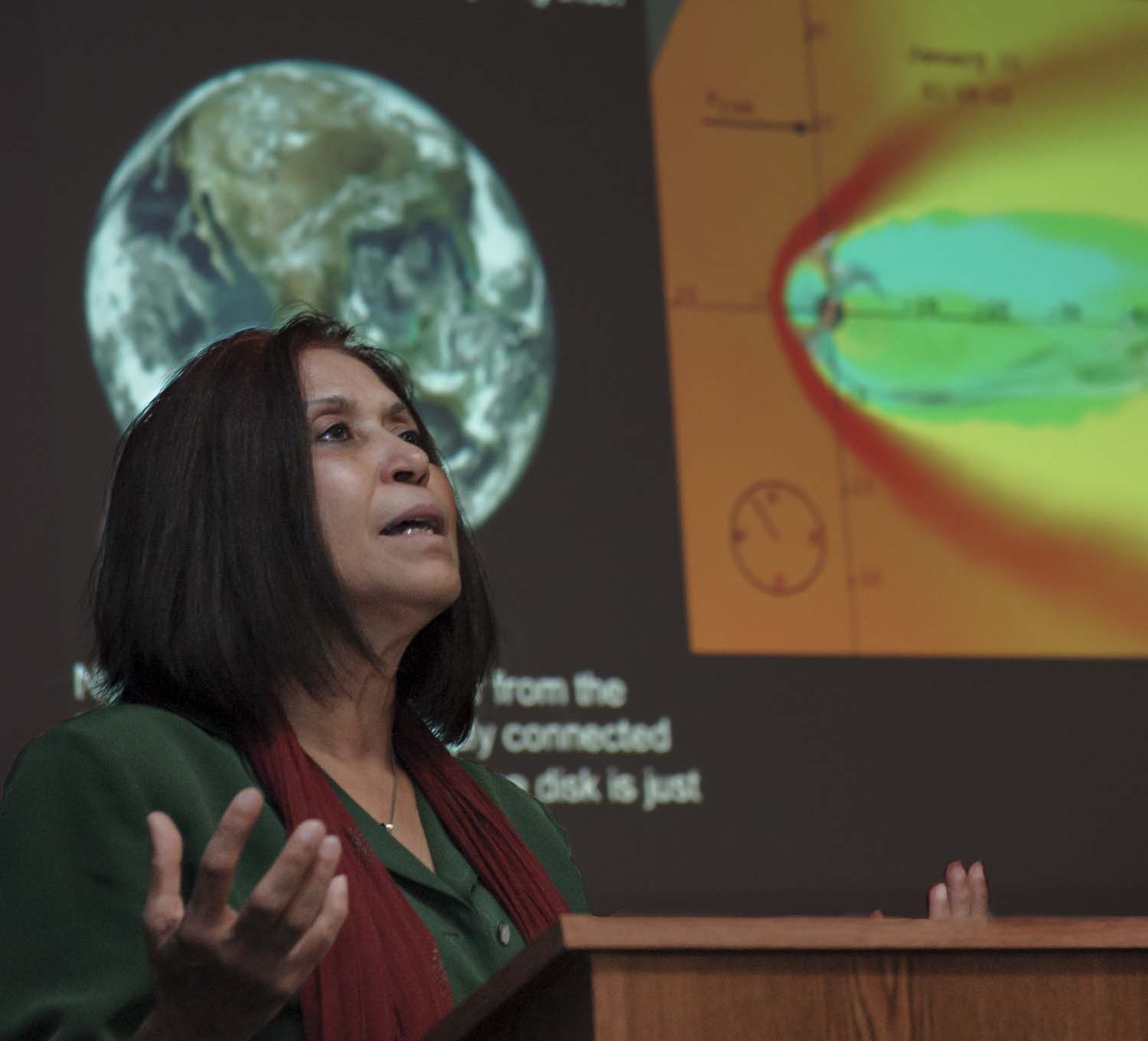
Bugos earns 2015 NASA History Award
Glenn Bugos of the NASA Ames History Office earned the 2015 NASA History Award, presented to the NASA person who exemplifies the highest standards for professional historical work. Jack Boyd, senior advisor to the center director, who earned the Award in 2008, notes, “Glenn is constantly on call to center staff to shed light on the mysteries of our past, keep historical items and issues from falling through the cracks, and drive projects that require a deeper understanding of Ames history.” He has helped motivate people around Ames to engage in historical debate and reflection, most evident in the outpouring of involvement in center anniversary events.
Bugos built a magnificent history operation at NASA Ames, starting in 2003, from scratch and on a limited budget. He built the reference collection in the high bay of N207–housing artifacts, media and documents–and established policies and guided the archivists who have staffed it. Ames became the first branch of the federal government to offer its finding aids in Encoded Archival Description. He has published widely on topics relevant to aeronautics and space exploration, in articles long and short and most notably in his history of the center, Atmosphere of Freedom, which is now in three editions and printings.
As Ames first contemplated the opportunity of leasing Moffett Federal Airfield under the historic preservation laws, Bugos helped make the case with Keith Venter, the Ames Historic Preservation Officer. Once the lease moved forward their historic preservation analysis took on even greater urgency, for example, in the reviews to move facilities onto the National Register, and in defining the historic character of Ames properties leased to Planetary Ventures.
“Glenn’s productivity and energy are legendary,” notes NASA Chief Historian Bill Barry. “With all the changes happening at Ames in recent years the workload has been intense, and Glenn keeps history alive at Ames.”
Mehta explains research on the aerodynamics of sports balls
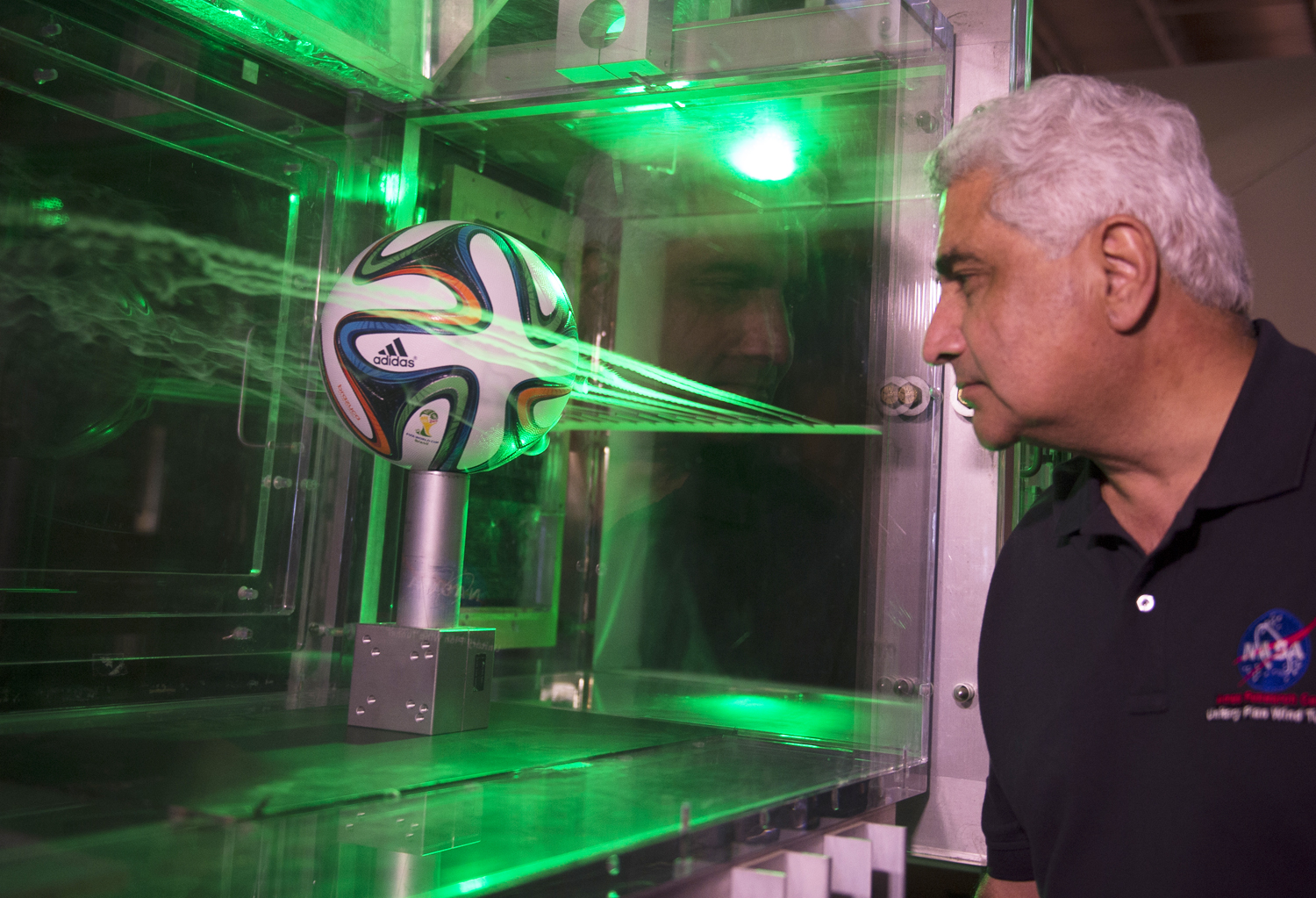
Ames research featured in NASA logos
The familiar red wing shooting through the NASA meatball on its path upward into the future of space exploration, hinting at a grand red A, was modeled on an airfoil designed 60 years ago at Ames.
Elliot Katzen, an aeronautical engineer at Ames working under the guidance of R.T. Jones, in 1955 began theoretical work on wing shapes to get the maximum lift-drag ratio when flying at Mach 3. Jones was the foremost expert on the aerodynamics of wing sweep, based on years of theoretical analyses, parametric studies and wind-tunnel tests by his colleagues in the Ames high speed research division.
Jones suggested that Katzen start with a wing swept sharply at 80 degrees. When flying at Mach 3, this placed the wing behind the Mach cone so that air flowing over the wing would actually be slow. Jones also suggested that arrow wings could be improved easily by twisting and cambering (adding curvature at the leading edge).
Katzen designed a pointy airfoil with camber, but no twist, and a slightly upturned nose. The Ames model shop built him a test model, which Katzen carried to Jones’ desk for inspection. The wing was thin metal, and Jones twisted it by hand into the shape he thought would perform best. In tests in the Ames 1- by 3-foot supersonic wind tunnel it achieved a maximum lift-drag ratio of 9, the highest efficiency then measured for a wing at Mach 3 (as he explained in NACA TN 4361). Katzen was proving a point about aerodynamic theory, which explains why the red shape is not instantly recognizable as an operational wing.
Katzen’s arrow wing was prominently displayed at the July 1958 NACA Inspection held at Ames. The National Advisory Committee for Aeronautics was the predecessor to NASA, and the inspections were their one major outreach effort. For more about the inspections see: http://grchistory.grc.nasa.gov/inspections/
The first day of the inspection was attended by several hundred leaders of government agencies, universities and aerospace firms; the second day by the next generation including lower ranking military officers, graduate students and the press.
They visited nine key Ames wind tunnels, where they heard talks by NACA engineers. NACA leadership vetted each talk, so that visitors quickly got a comprehensive view of how NACA research could be of use to them. Katzen’s arrow wing, mounted in the high bay of the Ames Unitary Plan Wind Tunnel, was a key prop in the lecture on the state-of-the-art in supersonic aircraft.
One visitor to the inspection was James Modarelli, a graphic designer working at the NACA Lewis Laboratory in Cleveland. Modarelli then was thinking about design concepts for the official seal for NASA, which would be officially established three months hence. The feathered wing insignia that had served the NACA so well no longer fit a new agency focused on space exploration.
The NASA seal emerged through rigid bureaucratic process, driven by the U.S. Army Heraldic Branch. Harry Devoto, then head of graphics and exhibits at Ames, provided the basic concept. He drew the traditional circle required of all government seals, and added an outer ring with NASA spelled out. Inside was a blue field with several star shapes. At the center of the field was a sphere representing Earth, and the path of a satellite circling that globe.
Modarelli modified DeVoto’s basic design and added the now familiar red wing near the top of the globe. He was inspired by the model of Katzen’s highly swept, cambered and twisted arrow wing. He understood that it represented NASA’s future aeronautic thrust, aeronautics being the first “A” in NASA.
As the official seal wound its way to approval, NASA’s first administrator, Keith Glennan, tasked Modarelli with design of a simplified NASA insignia for use on lapel pins, awards, signs, buildings, aircraft and spacecraft. Modarelli replaced the globe at the center with the initials “NASA” and, against the white of the lettering and the blue of the star field, made the red wing far more prominent. The resulting insignia, now affectionately called the “meatball,” quickly became one of the most recognized logos in the world.
Over the years the red shape has been called a vector, a slash, a chevron, a triangle dart—all of which obscure its historical origins as an aircraft wing. Following closely on the work of Katzen and Jones, aeronautical engineers led by Clinton Brown and Francis McLean at NASA Langley revised the airfoil to make it more practical in a flying aircraft. They added a cobra-like raised nose and the drooped trailing edges. The airfoil was first implemented on the XB-70 Valkyrie supersonic bomber, and later reflected in all the designs for a civil supersonic transport in the1960s.
To his many friends at Ames, the contribution of Katzen to the NASA insignia was strikingly obvious. Likewise at Langley, the colleagues of Brown and McLean saw their wing design reflected in the shape. NASA leadership, though, hoped that the American public would see the insignia as an abstraction, representing the contributions and ambitions of the countless people who would launch America into space. As NASA marks the close of 2015 as the centenary of the founding of the NACA, the red wing clearly symbolizes the legacy of the women and men of the NACA alive throughout NASA today.
The history of the wing, as well as the history of all the NACA and NASA logos, is now told in a new NASA history monograph: Joseph R. Chambers and Mark A. Chambers, Emblems of Exploration: Logos of the NACA and NASA (NASA SP-2015-4556) and are available as a free download at https://www.nasa.gov/connect/ebooks/index.html
More than 24,000 attend American Geophysical Union meeting
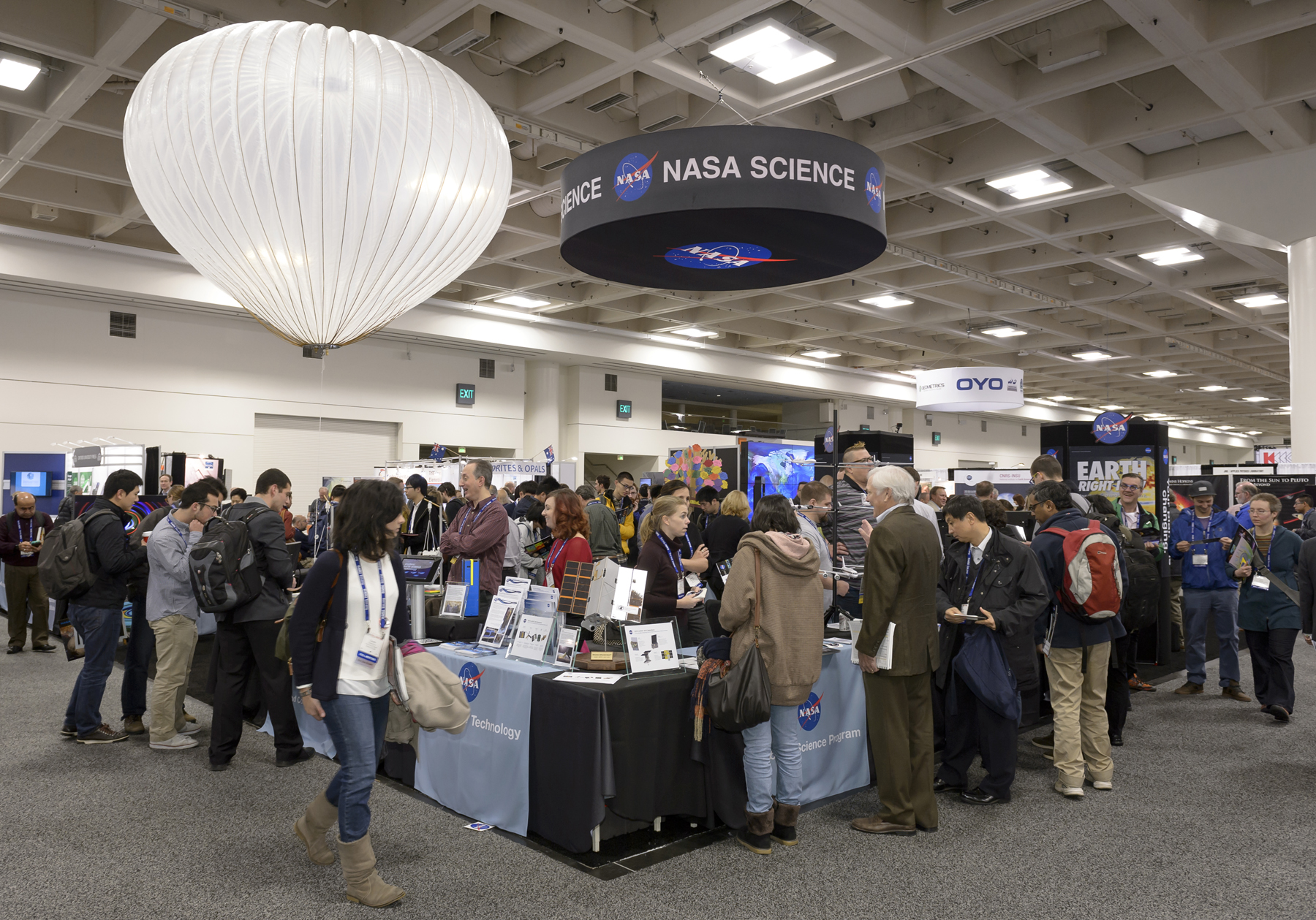
Second life for historic Hangar One wood as Super Bowl 50 stadium décor
Underneath iconic Hangar One’s wooden planks, at what was once known as Naval Air Station Moffett Field, crews constructed and maintained some of the most cutting-edge items in the history of aeronautics, like fixed-wing aircraft and the USS Macon naval airship.
Today, the pre-World War II wood removed from Hangar One lines the walls of a brand new San Francisco Bay Area institution seven miles away.
Designers incorporated eight acres-worth of the reclaimed redwood into walls and bars in the premier suite level, as well as the rooftop benches and raised planter boxes located on the solar terrace of Levi’s Stadium in Santa Clara, home of the San Francisco 49ers.
“It had historical significance in the area,” said Jack Hill, Levi’s Stadium Project Executive. “It was a good way to tie Levi’s Stadium to the area. For a lot of reasons, it was the right thing to do. Plus, it was a beautiful type of wood.”
In 1994, the U.S. Navy handed the Moffett airfield over to NASA Ames. Workers stripped the wood from the hangar in 2012. Now, only the oblong, metal skeleton of the 1933 structure still stands on the airfield at the Ames campus.
When the team owner’s wife, Denise DeBartolo York, heard of the wood, she lobbied to have it, according to Kristine DeMaria, marketing manager at TerraMai, a White City, Oregon company, which provided the reclaimed wood for this construction project.
Hill said the wood had countless coats of paint and layers of dust covering it. Millworkers cleaned the wood by putting it through a machine to take off the top layer. Then, they restored the warped and tattered portions by sanding down the surface and plugging some holes.
“If you take that weathered face off, you have a clean and classic aesthetic,” DeMaria said. “Reclaimed old growth redwood is excellent because of how stable and durable it is. This reclaimed wood is from ancient trees and is a premium material.”
With work, Hill said, eventually, the deep, natural red color of the wood returned. The marks where the original screws used to be were left to help tell the tale of the wood’s eight-decade journey from a Northern California forest to performing milestone tasks: protecting huge airships at Moffett, covering a historic landmark of NASA’s center in Silicon Valley and adorning a 68,500-seat stadium.
DeMaria said TerraMai has been part of similar reclaimed wood projects at other locations in the Bay Area such as Google and University of California, Berkeley.
“The choice of reclaimed redwood demonstrates both the 49ers and Levi’s fine aesthetic tastes, their respect for materials with a special history, and their commitment to the environment,” Ken Westrick, TerraMai CEO said.
Hill said using locally sourced and reclaimed material helped Levi’s Stadium receive Leadership in Energy and Environmental Design (LEED) Gold certification. LEED is a federal program that recognizes green building practices, which require owners to be environmentally responsible and to use resources efficiently. Levi’s Stadium was the first football stadium to achieve that sustainability status as new construction.
Ames participates in Bay Area Science Festival
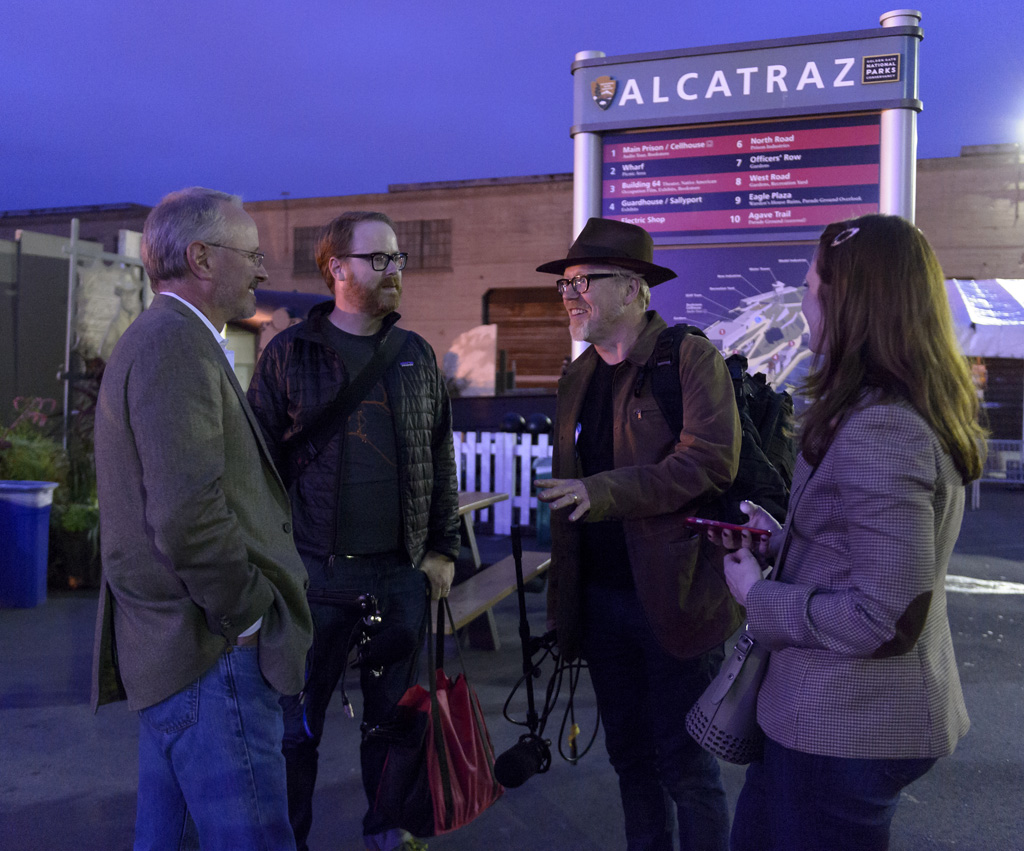
For the past five years, NASA Ames’ Office of Education and Public Outreach have worked closely with groups that support NASA’s goal of helping build a STEM (science, technology, engineering and math) proficient public. One such organization is the BASF (Bay Area Science Festival) with whom Ames has developed a working relationship bolstered by a Space Act Agreement signed in 2014. This NSF (National Science Foundation) seed-funded organization has been implementing various STEM engagement activities throughout the Bay Area.
The BASF activities spanned two weeks from Oct. 23 – Nov. 8, 2015, with events ranging from TED talks, educator professional development sessions, facility tours of many Bay Area premier research labs and concluded with a three-day STEAM, which includes the added emphasis on the arts, Carnival held at Pier 48. NASA and Ames participated in three major events located across the Bay Area.
NASA’s Deputy Administrator Dava Newman participated in a 30-minute interview with Adam Savage (of the Mythbusters television show fame) as part of Tested.com: The Show at the world-renowned Castro Theatre in San Francisco Oct. 23. Newman discussed the future of NASA and the upcoming journey to Mars. She also discussed her positive opinion of STEAM and encouraged the public to actively participate in the vision for NASA’s future. A link to the interview can be found here: https://www.youtube.com/watch?v=PjTQL8pflEU.
Nerd Nite, a BASF annual event geared towards “nerdy” adults, was held on Oct. 27, 2015, at the historic Alcatraz Island. Guests were treated to tours of Alcatraz’s facilities, opportunities to participate in unique activities and a live recording of Tested.com’s weekly podcast, which featured David Miller, NASA’s Chief Technologist. Miller discussed NASA’s technology portfolio, its future and its impact of everyday life.
NASA’s participation concluded with several booth spaces at STEAM Carnival, held in San Francisco’s Pier 48 from Nov. 6 – 8, 2015. The carnival is a unique, high-energy event for the whole family that featured high-tech games focused on fun and learning. NASA Ames coordinated the agency’s presence at the event, which included two large inflatables of the Orion capsule and SLS rocket (courtesy of Marshall Space Flight Center), which greeted guests as they entered the facility along with a high-fidelity full-scale model of the Mars Curiosity Rover (on loan from JPL).
NASA Ames coordinated a space inside of STEAM Carnival that represented a cross section of the Ames research community. Aeronautics showcased Ames’ role in the aeronautics industry with a interactive modules featuring air traffic control and aircraft management. The Bone and Signaling Lab in conjunction with GeneLab brought samples of microbes studied aboard the International Space Station (ISS) along with 3-D printed samples of rodent bones both before and after exposure to micro gravity in space.
The Mission Design Center brought samples of low-cost, small satellite missions. Astrobiology provided graphic novels for distribution to visitors, telling the story of NASA’s search for life in the universe and celebrating 50 years of exobiology and astrobiology research. Kepler’s outreach team shared the recent discovery of Kepler186F, Earth’s “cousin,” along with the second installment of the discovery mission: K2.
NASA Ames also hosted a number of VIPs throughout the weekend. On Nov. 6, Kirk Costello, deputy chief scientist of the International Space Station, spoke on the Explorer Stage highlighting technology used aboard the ISS and its connection to life on Earth. He shared videos about the research completed on muscular atrophy and growing food in space.
On Nov. 7, 2015, former astronauts John Grunsfeld (five times space flight veteran and currently associate administrator for the Science Mission Directorate) and Steven Smith (four times space flight veteran and current associate director for ISS, Science Directorate at Ames) shared their experiences in space to an excited crowd of adults and children.
The real stars were Ames’ contingent of researchers and engineers who continued a rich tradition of authentic interactions with members of the public. The thirst for science continues and the Office of Education and Public Outreach team, on behalf of Ames and agency, continue to ignite and engage that passion.
In memoriam . . .
Former Space Science Chief Larry Colin passes on
Larry Colin came to NASA Ames in 1965 to begin a remarkable career of research and science leadership. His early work included radio wave propagation in the atmosphere, atmospheric chemistry and especially understanding the physics of the ionosphere.
His talent as a leader became obvious and in the late 1960s, when he was chosen as project scientist for Pioneer Venus, a position he held through development, launch and operations, and subsequent analysis. He was awarded the Distinguished Service Medal for his work on this mission. That experience led to his role as project scientist for the Galileo Probe into the atmosphere of Jupiter, leading the mission science until his retirement, a year before Galileo was launched. Larry received the Outstanding Leadership Medal for overseeing and implementing the science activities on the mission.
In the early 1980s, Larry was deputy chief of the Space Science Division, and soon after moved up to take over as division chief, serving in that capacity until his retirement. The division flourished and grew under his leadership. Top notch scientists were recruited and hired to establish a world class capability in laboratory astrophysics, an internationally recognized program in interstellar chemistry and strengthening of Ames’ already strong planetary sciences program.
Working for and with Larry was enormously enjoyable. He had a legendary capacity for generating ideas that he would throw out on the table at division meetings, and then argue his point passionately, yet be able to accept criticism and even change his mind if it came to that. He was never at a loss for words; when a verb escaped him, he would add “ize” to a noun and move on. He was passionate about science, about NASA and about life in general.
Larry was born in Brooklyn, on Jan. 19, 1931. His undergraduate electrical engineering EE degree was from the Polytechnical Institute of Brooklyn, his master’s from Syracuse, and his PhD from Stanford in 1964. After retirement in early 1988, Larry contributed to NASA by serving on a number of committees and study groups.
He began teaching a variety of popular courses through Stanford’s continuing education program. Generating the slides for these courses gave him one more opportunity to indulge his “techie” side, and he was the proud possessor and master of everything new, especially if Apple made it. He was seldom seen without an iPhone, iPad, or the like.
Larry was a voracious reader and lifelong learner. His personal library consisted of more than 1,000 books, nearly all of which he’d read.
Larry died on Nov. 3, 2015, at his home in Palo Alto and with his family surrounding him. He is survived by his wife of 62 years, Roberta; his two children, Michael Colin and his wife Shakti; his daughter, Lisa Colin-Fowler and her husband Michael Fowler; his grandchildren, Jordan, Miles, Jennifer, Shaina, Burt and Mason, and great grandchildren, Alison, Jarod and Lillionie; and many many friends.
One of Larry’s favorite words was “amazing!” That was because he did find his friends and family, his work, opera, theater, a multitude of books and much else to be: amazing. It was certainly our great pleasure to have known and worked with this amazing man.
Model machinist Richard Carpenter dies
Richard Carpenter (operating a vertical milling machine in this photo.)
Richard J. Carpenter, a long-time employee at NASA Ames, passed away peacefully at his home Dec. 4, 2014, after a short battle with leukemia. A veteran of World War II, Richard and his wife Frances moved to Cupertino in 1949 right after he started a new career as a model maker at Ames.
Richard cherished his time at Ames and enjoyed machining models of airplanes that were tested in the 16-foot and the 7-foot by 10-foot wind tunnels. He also worked on parts of a centrifuge that was designed and built for the Apollo astronauts. During his time at Ames, Richard’s brother William (Bill) Carpenter also was employed here along with Richard’s father-in-law John Rossi.
After retiring from Ames in 1973, Richard once again demonstrated his talents working as a machinist at a shop in Alviso owned by Bill Wagner. He retired a second time in the mid-nineties. Many of the friends Richard made at NASA Ames may remember him attending the annual holiday party held every December. Richard didn’t make an appearance at the party in December of 2014 but he talked about going and was hoping to attend.
Richard was proceeded in death by his wife and childhood sweetheart Frances (Rossi) Carpenter and his brother Edward. He is survived by his three children, Cathy Geistlinger, Richard Carpenter Jr. and Doree Carpenter. He will be missed and fondly remembered by his brother Bill Carpenter, his children and seven grandchildren.
Ames’ disability advocates commemorate Americans with Disabilities Act
The Ames Disability Advocates (ADA) celebrated the twenty-fifth anniversary of the Americans with Disabilities Act during National Disability Employment Awareness Month (NDEAM) in October 2015 by hosting two events on center, a NDEAM speaker panel and a Fun Run, Walk and Roll.
The Ames NDEAM panel was held Oct. 14, 2015 and entailed members of the ADA community sharing their experiences and insight on overcoming challenges unique to the disability community. The panel provided an instrumental understanding regarding invisible disabilities, the world of those who stutter and the extensive role of employees caring for loved ones with disabilities.
The Americans with Disabilities Act prohibits discrimination against people with disabilities in employment, transportation, public accommodation, communications and governmental activities (United States Department of Labor Website, Americans with Disabilities Act, 2016).
Dana Bolles, the ADA chair, stated the significance of the NDEAM speaker panel, “The panel is significant as it brings the topic of disability to a personal level. Employees at Ames were able to get insight into the world of disability as it relates to their colleagues, which also demonstrated how disability relates to NASA.”
The two-mile Fun Run, Walk and Roll, was ADA’s second event for NDEAM and the center’s first designated all-abilities-inclusive Fun Run. The event, held Oct. 21, 2015, was co-hosted by the Safety and Mission Assurance Directorate. The center’s disability community, including those in wheelchairs, were invited and encouraged to participate. The ADA community assisted with registration, walked and rolled the two miles and cheered for all participants at the finish line.
David King, the associate director of Safety, Health and Medical Services, expressed contentment with the event, “This year we (ARC Fitness Center) teamed up with the Ames Disability Advocates to jointly sponsor the Fall Fun Run, Walk and Roll. It was great to work together to develop and promote an event where the entire Ames community could enjoy each other and the inspiring weather. I was immensely moved by the outpouring of support to make this happen all the way to the cheering on for every one crossing the finish line. We have a great community at Ames that supports full participation – way to go Ames!”
Both events were milestones for the center’s promotion of the Americans with Disabilities Act, which strives towards a future in which all the doors are open to equality of opportunity, full participation, independent living, integration and economic self-sufficiency for persons with disabilities.
Ames Holiday Festival inspires and entertains guests
More than 700 Ames employees and their families attended the Ames Holiday Festival on Dec. 5, 2015.
This year’s event incorporated a science, technology, engineering and mathematics (STEM) focus and a special session with astronaut Yvonne Cagle, build-a-robot station, and science and robotics demonstrations.
During the event kickoff, every eye and ear was attentive as Cagle addressed the audience and championed STEM and space exploration. Cagle inspired everyone to imagine the possibilities through STEM and acknowledged those present as the next generation of astronauts. The excitement increased as the students and families had the opportunity to personally interact with Cagle during the meet-and-greet session.
All ages enjoyed the festivities. Entertainment included a hip-hop and break-dancing performance from the group Beatz and Pieces, a live Disney Frozen show with a character meet and greet, the Ames Jazz Combo, face painting, photo booth, Lego play and coloring stations and a VIP Santa Claus arrival via an Ames fire engine with an Ames police squad escort. Many brought their Christmas wish list to share with Santa and said they look forward to attending next year’s event.
Weaver addresses social media
On Jan. 11-14, 2016, NASA Ames hosted the social media leads from all NASA centers for a week of meetings led by the NASA Headquarters social media team. The meetings, held in Sustainability Base, covered strategy, best practices, guidelines and challenges, and included a day-long training on a social media management and metrics tool procured by Headquarters.
Ames tours showcased the diversity of the center’s portfolios in aeronautics, technology and science for the visitors, who expressed their positive impressions of the center and posted to their social media accounts about what they learned. The leads also met with representatives from Google, Facebook and Twitter, who all gave insights into newly developed features and acquired secondary platforms.
Ames ongoing monthly events calendar
African American Advisory Group (AAAG) Mtg., last Tuesday of each month, 12:00 – 1:00 p.m., Building N-255, Room 101C. POC: Porsche Parker, ext. 4-0044.
Asian American Pacific Islander Advisory Group (AAPIAG) Meeting, Third Thursday each month, 1:00 p.m. – 2:00 p.m., Building N213, Room 204A. POC: Tony Damian, tony.a.damian@nasa.gov
Moffett Aikido Club, Monday and Wednesday evenings, 6:30 p.m., Building 944. Aikido is a non-competitive, defensive martial art known as the “Way of Harmony.” POC: Diane Pereda (650) 575-9070 or Robert Dean (650) 787-1007, email: mfaikido@aol.com
Ames Amateur Radio Club, third Thursday of each month, noon, Building N-T28 (across from Building N-255). POC: George Tucker, at ext. 4-2200.
Ames Bluegrass Club, every Tuesday from 11:30 a.m. to 1:00 p.m. in Building 944. Players of all instruments and all levels are welcome, but we are particularly interested in experienced players willing to help improve the group’s musical skills. POC: Bob Haberle at ext. 4-5494 or email: robert.m.haberle@nasa.gov
Ames Bocce Ball Club, Ames’ newest Exchange-sponsored club is seeking members. POC: Mike Lindsay email: michael.c.lindsay@nasa.gov
Ames Bowling League, Thursdays, 6:15 p.m. at Fourth Street Bowl in San Jose. Need regular and subsitute bowlers. For sign up questions contact Michael Hom at ext. 4-0302 or Mina Cappuccio at ext. 4-1313.
Ames Contractor Council Mtg., first Wednesday of each month, 11:00 a.m., Building N-200, Committee Room. POC: Herb Finger at ext. 4-6598.
Ames Federal Employees Union (AFEU) Mtg.,third Wednesday of each month, Noon. Building N-204, Room 101. Guests welcome. Check for schedule changes at: http://www.afeu.org. POC: Paul K. Davis, ext. 4-5916.
Ames Golf Club, Members have the opportunity to play approximately 13 tournaments per year at a variety of 18-hole golf courses in the Bay and Monterey Area. POC: Barry Sullivan: Barry.T.Sullivan@nasa.gov.
The Hispanic Advisory Committee for Excellence (HACE) Mtg., first Thursday of each month, 11:30 a.m. – 12:30 p.m., Building N-255, Room 101C. POC: Jeanette Zamora, jeanette.zamora-ortega-1@nasa.gov.
Ames Jazz Band Club, Thursday evenings, 5:30 p.m. – 7:00 p.m., Building 944. POC: Ralph Bach, email: ralph.e.bach@nasa.gov
Jetstream Toastmasters, Mondays, 12:00 p.m. – 1:00 p.m., Building N-262, Room 100. POC: Tim Steiger, ext. 4-0195, tim.steiger@nasa.gov. Web: http://jetstream.freetoasthost.com
Native American Advisory Committee (NAAC) Bi-Monthly Meeting, First Thursday of the month, 11:00 a.m. – 11:45 a.m., Building 19, Room 1096. For more information contact Anita Abrego at Anita.I.Abrego@nasa.gov, or call ext. 4-2565.
Ames Nimble Knitters Club, Mondays, 11:30 a.m., Building. N-210, Room 141. POC: Diane Alexander at ext. 4-3140 or email diane.alexander-1@nasa.gov. All knitters and crocheters are welcome to attend and participate in our charity projects.
Ames Roller Hockey Club, meets daily from Noon to 1:00 p.m. at rink on north end of the 80-foot-by-120-foot wind tunnel. Players should have experience skating and must wear protective equipment. POC: James Prunty, james.a.prunty@nasa.gov
Ames Safety Committee, third Thursday of each month, 10:00 a.m. – 11:00 a.m., Building N-237, Room 200. POC: John Livacich, jlivacich@mail.arc.nasa.gov, ext. 4-3243.
Women’s Influence Network (WIN), first Wednesday of each month, Building N-244, Room 209, Noon – 1:00 p.m., POC: Ali Guarneros Luna, ali.guarnerosluna@nasa.gov
Exchange Information
Information about products, services and opportunities provided to the employee and contractor community by the Ames Exchange Council. Visit our web site at: http://exchange.arc.nasa.gov
Beyond Galileo Gift Shop N-235 in the cafeteria, 8 a.m. – 2 p.m., ext. 4-6873
Visitor Center Gift Shop (Exploration Center), Tues-Fri, 10 a.m. – 4 p.m., Sat. – Sun, 12 – 4 p.m., ext. 4-5412
Remember to purchase your baby shower, birthday and holiday gifts at Ames’ two gift shops!
Mega Bites Cafeteria N-235, Mon – Fri, 6 a.m. – 2 p.m., ext. 4-5969/Catering ext. 4-2161
The SpaceBar: Subs & Burgers, Bldg. 3, The SpaceBar is open Mon through Fri from 7:30 a.m. – 7:00 p.m. Continental breakfast and coffee starting at 7:30 a.m. with full food and beverage service 11:00 a.m. to 7:00 p.m. See: http://exchange.arc.nasa.gov/cafe/menu.html for menu items.
RV lots available. Call to reserve a space at (650) 604-0698. Civilian/Contractors, $50/mo; military $25/mo
NASA Lodge (Bldg. 19) (650) 603-7100
Where to stay when you’re too tired to drive home? What about the lodge?! Two types of rooms: Bldg. 19 (43 rooms), rate: $65/night ($5 ea add’l adult); Bldg. 583 A&B (150 rooms), rate: $55/night ($5 ea. add’l adult); B547 rate $60/night (for large groups)
Ames Swim Center (N-109) (650) 603-8025
The swimming pool is now open. Hours of operation are as follows (lap swim only):
MWF 10 a.m. – 1 p.m.
MWF 3 p.m. – 6 p.m.
TTH 10 a.m. – 1 p.m.
TTH 4 p.m. – 7 p.m.
The pool is heated year round. The pool normally is available for lap swim, pool parties and special events. POC: Ryan Storms, pool manager (650) 603-8025. Memberships: single memberships: $60/yr. Family memberships: $80/yr. After purchasing a membership, there is an entrance fee: daily entrance fee – $3/day or lap pass fee – $50 for 20 uses. Platinum membership – $380/yr. (no daily fee). Special events include military training, swim team events, kayak role practice, etc. The cost for special events is $75/hr, or $50/hr for military.
Exchange basketball gym, Bldg. 2
(650) 603-9717
Hours of operation:
M-F 11 a.m. – 1:30 p.m.
M-F 4 p.m. – 7 p.m.
Chase Park reservations, call ext. 4-4948
NACA Park reservations, call ext. 4-4948
Ames emergency announcements
To hear the centerwide status recording, call (650) 604-9999 for information announcements and emergency instructions for Ames employees. You also may listen to 1700 KHz AM radio for the same information.
Ames Cat Network
The Ames Cat Network needs help finding homes for cats trapped at Moffett. They range from feral to abandoned/lost pets. They are tested, altered and inoculated. Call Iris at ext. 4-5824 if you or someone you know are interested in fostering or adopting a cat.
National Aeronautics and Space Administration
Ames Research Center
Moffett Field, CA 94035-1000
The Ames Astrogram is an official publication of Ames Research Center, National Aeronautics and Space Administration.
Managing Editor………………….Matthew Buffington
Editor, Layout and Design……………Astrid Albaugh
Employees can reach the Astrogram Office via email at: astrogram@mail.arc.nasa.gov or by phone at ext. 4-3347. For downloadable pdf copies of each issue, visit the Astrogram website at:
https://www.nasa.gov/ames/astrogram



























